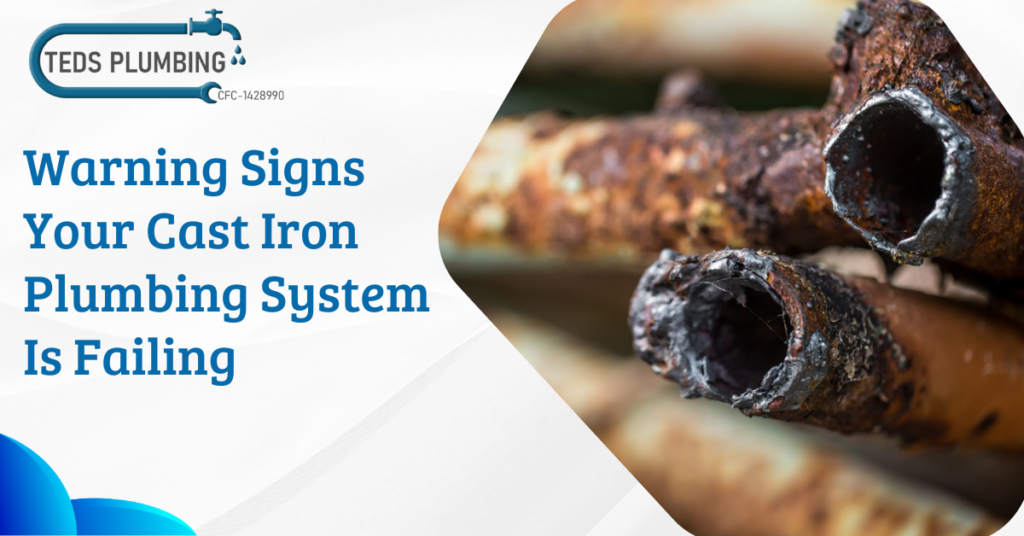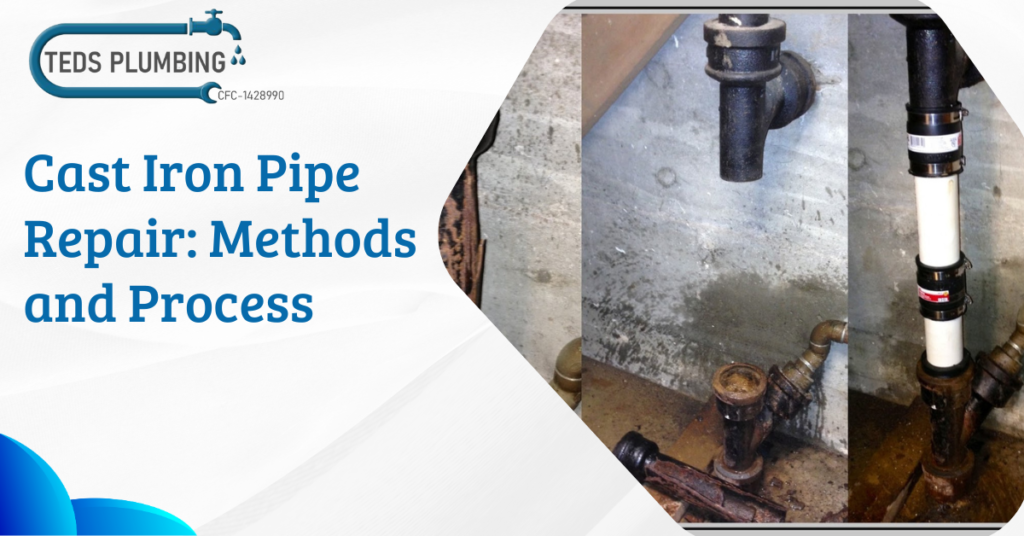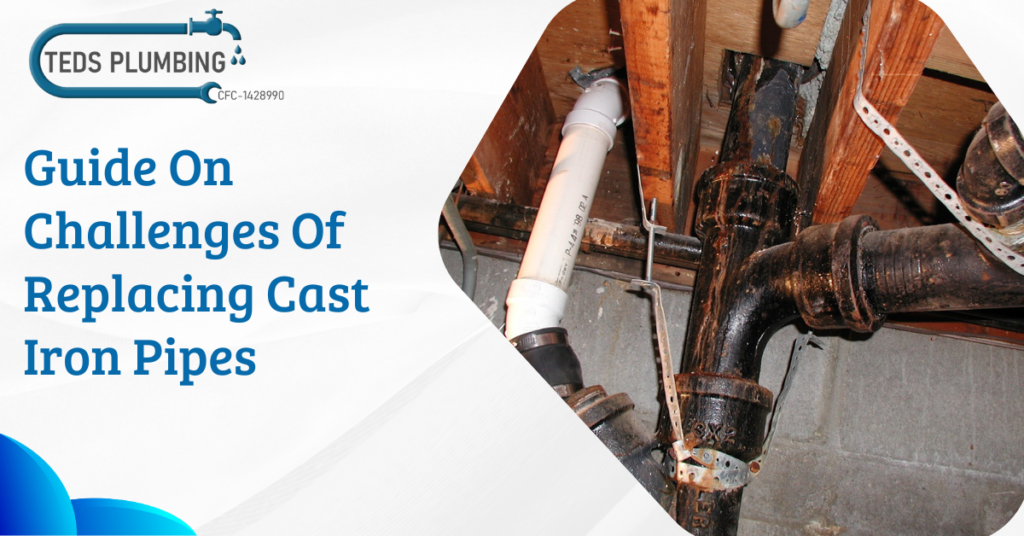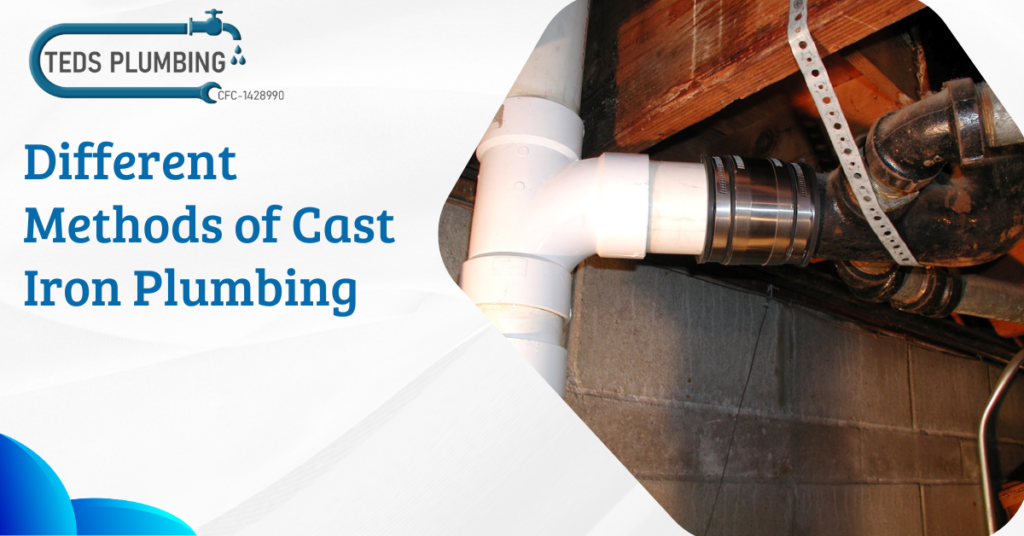Living in a house where your parents grew up is a dream. Those houses have a vintage look and unique fragrance that will take you back to the golden memories and nostalgia. However, you need an effective renovation while making the old house a new corner to create new memories with your family. If your home has cast iron plumbing you may need immediate action.
We all know that old houses, like those built in the 1970s and early 1980s, focus on building houses with strong and durable materials. Cast iron provides adequate support and a long life for your plumbing system. When renovating your old property, you must look for signs that your plumbing system is falling apart.
What Are The Warning Signs That Your Cast Iron Plumbing System Is Failing?
Cast iron pipe lining consists of strong pipes made with melted iron that are turned into pipes through robust molds. These pipes are supposed to last up to 50 to 100 years. However, with time it is most prone to welcome mold, mildew, rust and corrosion. There are various prominent signs that you can follow when you decide to replace your entire plumbing system.
Some of the alarming signs are as follows.
Slow drainage
If your toilets or sinks have started draining slowly, and normal unclogging procedures aren’t working, sediment buildup could clog your pipes. However, it can also cause water backup in your drain system and contaminate your drinking water and other sources.
Discolored water
If your faucet or toilet water is brown, orange, or discolored, your cast iron pipes could rust significantly. Cast iron is known to have rust issues, so this should be checked by a professional plumber immediately. Address the issue before cast iron pipes get more damage and ruin the entire plumbing system.
Wet spots
If your interior walls show wet spots, your plumbing stack could have sprung a leak. Since the pipe diameter of a plumbing stack is fairly broad, a major leak could be a huge problem. Don’t wait for minor leaks to become significant damage when the pipe bursts later.
Bad odor
Your plumbing stack is usually airtight, and toxic gas is expelled through a vent system in your roof. If you consistently notice a foul smell in your home, a leak in your plumbing stack could be the culprit. This is a potentially dangerous problem that certainly lowers the quality of life for residents. It needs to be dealt with promptly.
Mold
If your interior walls show signs of mold, a leak in your plumbing stack could provide a moist environment. It could be leaks in any of your piping, but the situation would be especially dire if it were the stack. Mold and mildew also welcome health hazards and a visible stench that can ruin the aura of your house.
Barnacles
No, not the barnacles you’d find on a ship. It’s just another name for tiny rust spots appearing on the pipes of your stack. These spots weaken the structural integrity of the metal and lead to leaks or something worse. It can be difficult to notice this if your plumbing stack isn’t normally exposed, but if you see these spots appearing for any reason, you should call a plumber. This issue can then be resolved without a leak happening.
These are the major signs that help you decide to immediately replacing cast iron pipes in your home. These minor problems can become major in a short span and can turn your plumbing system into a running hose. Consider hiring a professional company to detect and handle these problems and make your property safe again.
Replacement Options for Cast Iron Drain Pipes
If you like cast iron pipes, you have a few options for fixing them. You can choose between them and hire a specialized plumber to repair or replace them effectively.
Here are the options you have for cast iron replacements.
- Traditional Excavation
- Trenchless Pipe Replacement
- Pipe Lining
Traditional Excavation
This method involves digging out the old pipes, allowing for a full inspection, and removing damaged sections. It’s a thorough way to update pipe materials, size, and the overall system. Excavation lets you fix issues like poor connections or incorrect pipe slope, helping the new pipes last longer. Although it takes more time and work, traditional excavation offers a complete fix that ensures a reliable plumbing system.
Trenchless Pipe Replacement
Also known as pipe bursting, this modern technique replaces old pipes with minimal digging. A new pipe is pushed through the old one, breaking it apart and leaving the new pipe in its place. This method causes less damage to yards, floors, and walls and is quicker and cheaper than full excavation. It’s less disruptive and can even improve water flow by allowing for larger pipes, reducing future clogs.
Pipe Lining
Known as cured in place pipe (CIPP) this method repairs old pipes from the inside. A flexible liner is inserted into the old pipe and then hardened using heat or UV light technique, creating a new pipe within the old one. Pipe lining is quick and cost effective, causing little disruption and no need for extensive digging. It strengthens the existing setup and can improve water flow, making your pipes work like new ones.
Cast iron plumbing is a proven method for installing a durable plumbing system in your house or office. This state of the art material is now replaced by modern lightweight materials like copper or PVC. However, if you still opt for cast iron pipes, look for damage signs and have them fixed by professional plumbers to prevent property damage or contaminated water.
Choose Ted’s Plumbing Company if you want a professional team in Florida. Our skilled and experienced team provides tailored and specialized plumbing services in Fort Lauderdale. Our prices are lower and work quality is top notch compared to our competitors. Visit us today and get those pipes fixed now!
FAQs
How is cast iron pipe lining installed?
Cast iron pipes involve cleaning the old pipe inserting a resin soaked liner and then inflating and curing it to create a smooth new interior pipe.
What are the benefits of replacing cast iron pipes?
Replacing your cast iron pipes with a newer system can help you achieve better water quality, greater efficiency, and more pressure, as well as increase your property value.
What method is effective in repairing cast iron pipes?
Epoxy patches or clamps can temporarily fix minor leaks or cracks in cast iron pipes. However, trenchless pipe lining effectively avoids extensive excavation for long term solutions or widespread damage.




